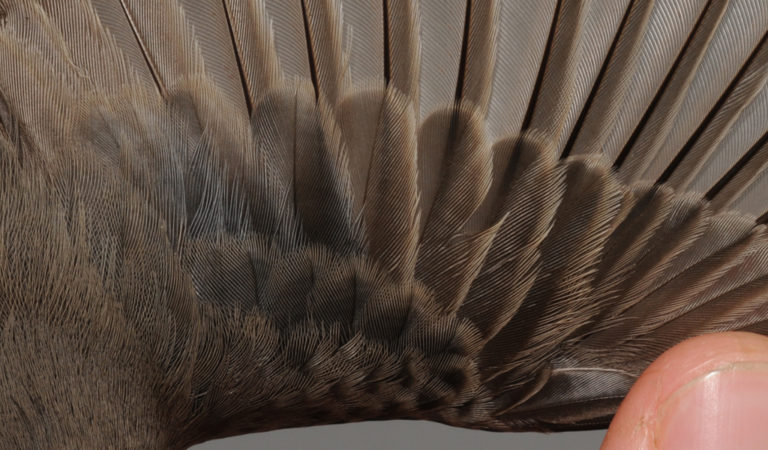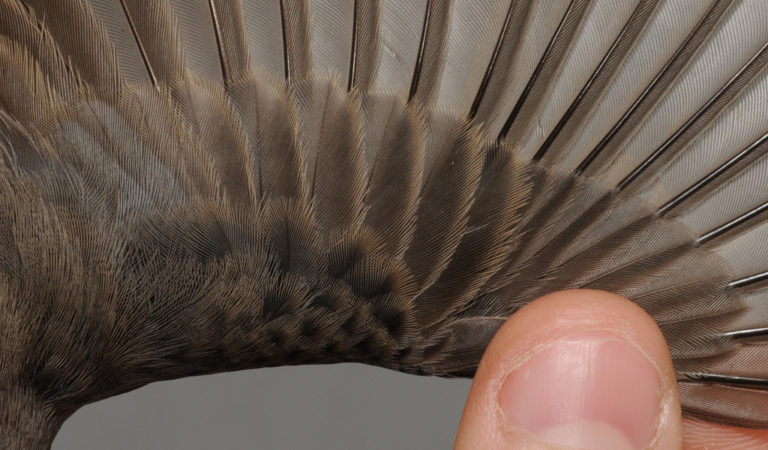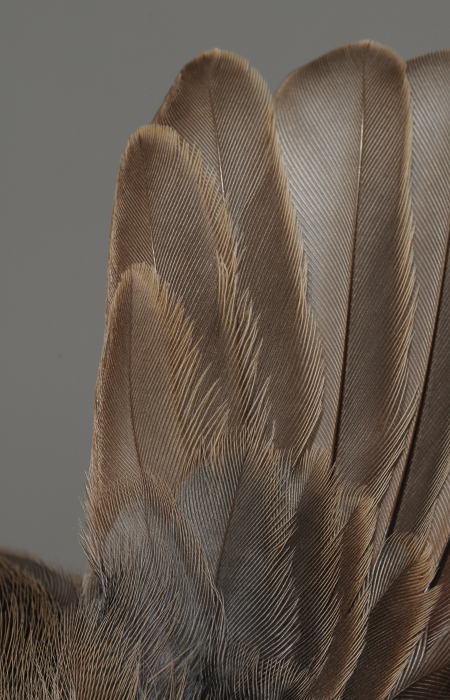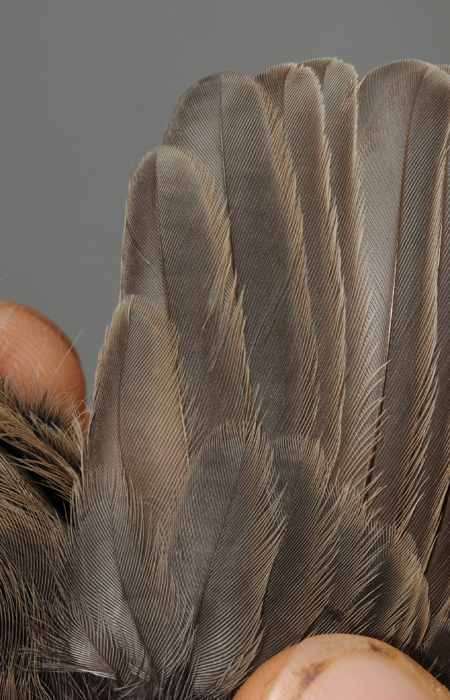

Black Redstart
AGE – BEST CRITERIA:
Moult contrast present in the wing of 1cy, generally among inner GC and sometimes TT. Adult birds show a uniform and freshly moulted plumage.
1cy:

1cy October. 4 unmoulted juvenile outer GC left. Note the contrast to the moulted post-juvenile inner GC showing darker centres with better gloss and fresher and more greyish edges. [CP42028]

1 cy October with 7 outer juvenile GC retained. Many 1cy include only 2-3 inner GC in the post-juvenile moult, and the contrast is therefore often found in the inner part of the arm (sometimes scapulars need to be lifted). Birds with extensive moult (all GC) still show contrast to juvenile pc. Birds with no moulted GC show contrast to moulted post-juvenile MC. [CS00224]

1cy October. All three TT are unmoulted juvenile, showing a pale brownish ground colour and allready some wear to the edges. Note the contrast to the inner post-juvenile GC. Juvenile TT can not be used for sexing (se Sexing-chapter). [CS00224]

1cy female November. All three TT are moulted post-juvenile (note the contrast to the juvenile SS, and the lack of contrast to the inner post-juvenile GC), being darker brownish-grey and of better quality with fresher edges. Most 1cy does not include TT in the post-juvenile moult, but renewal of singel (or all) TT are not rare (and birds with more extensive post-juvenile moult may even include single SS). Additionally, birds with post-juvenile TT can also be sexed (se Sexing-chapter). [CN89540]
Ringers’ DigiGuide is sponsored by: